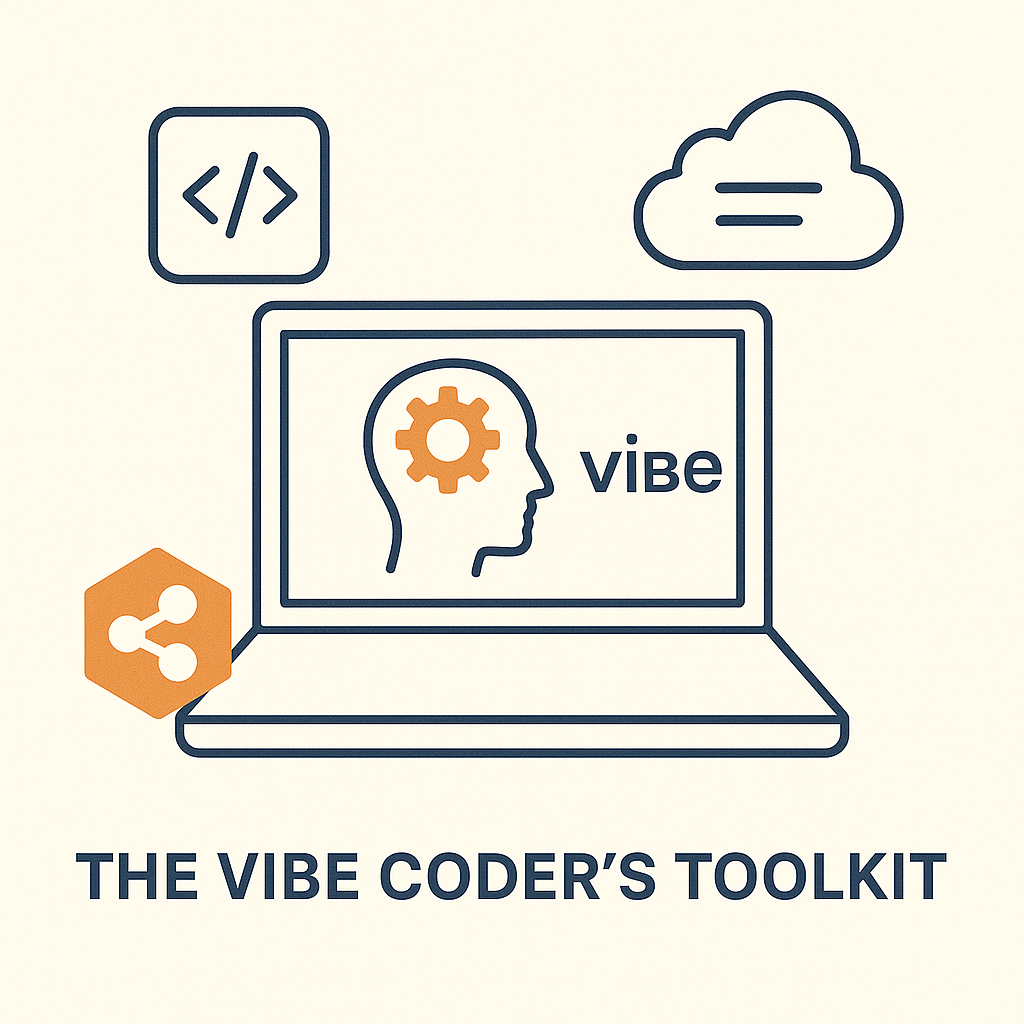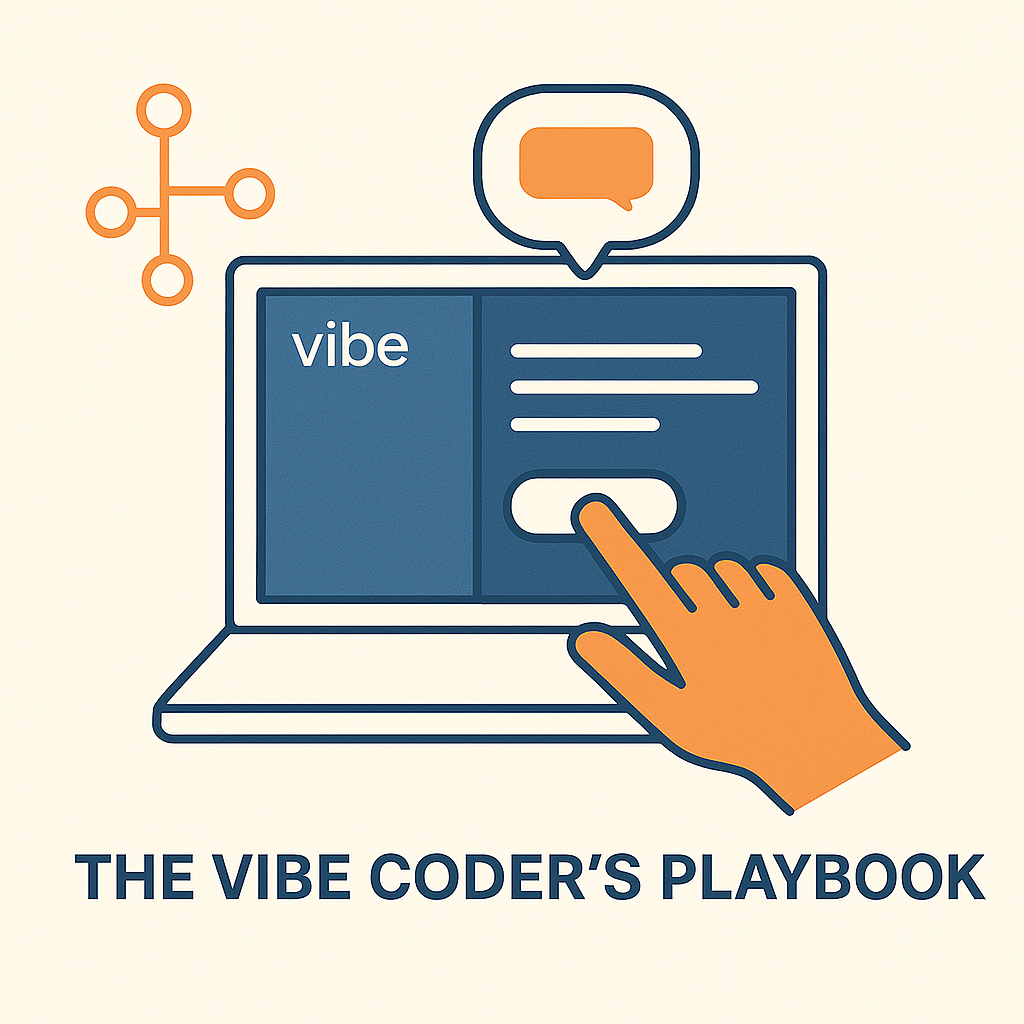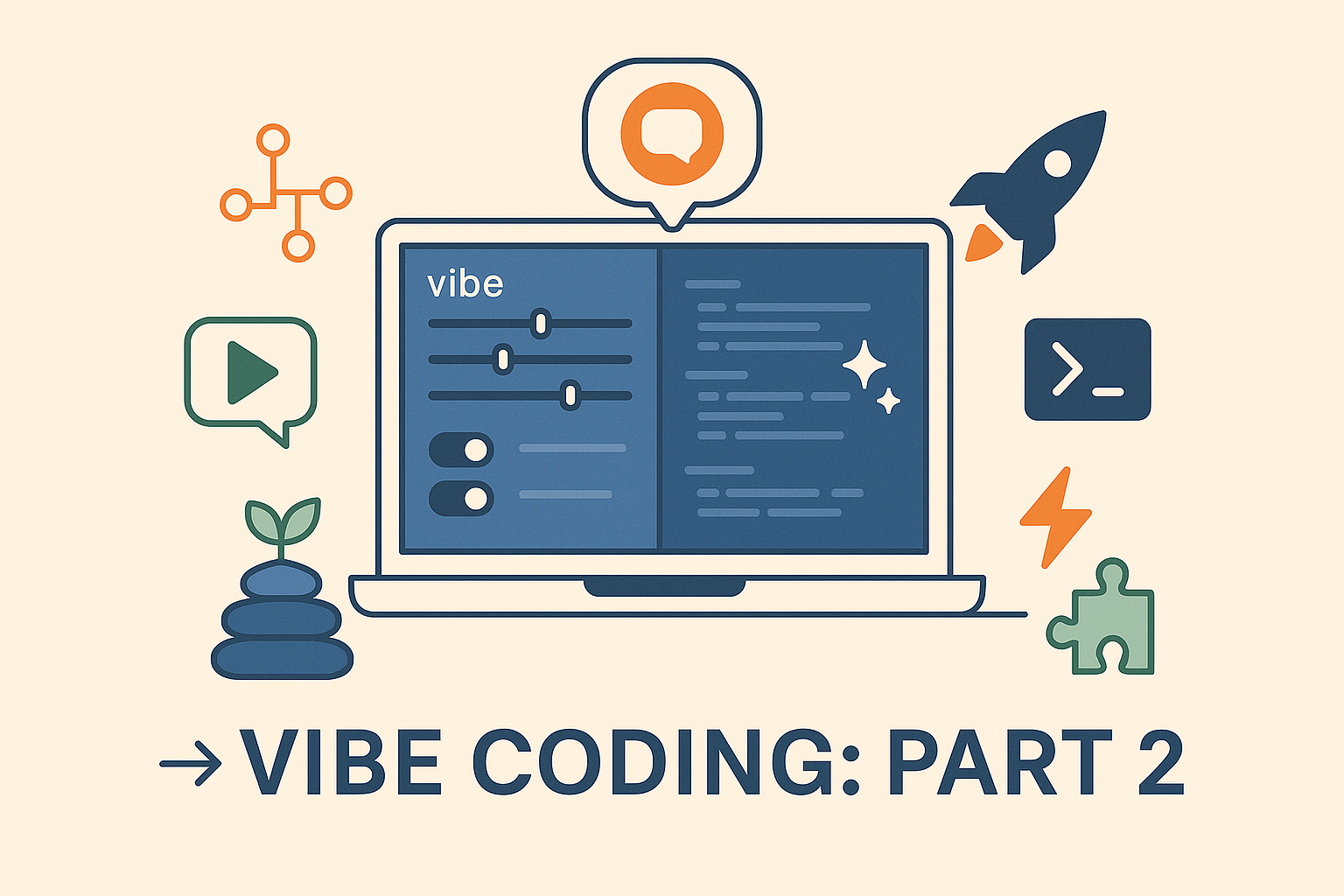We've covered the what and the how. You understand the transformative power of the Vibe Framework and you have a practical playbook to guide your development journey. But every craftsman needs a toolbox. The right tools can make the difference between a frustrating, slow process and a smooth, exhilarating experience.
This final post is your guide to the Vibe Framework ecosystem—the essential tools and technologies that empower you to build a full-stack MVP, from frontend design to backend logic and data management. We'll show you which platforms to use and, more importantly, how to use them to supercharge your Vibe Coding workflow.
Your Core Co-Pilot: The AI Coding Assistant
The heart of the Vibe Framework is the conversational loop, and that conversation happens with an AI coding assistant. This is your ever-present partner, ready to translate your ideas into code. The market is evolving rapidly, but a few key players stand out for their robust capabilities and ease of use for founders.
Replit AI: Replit is a cloud-based development environment that feels like a full operating system for coding. Its AI assistant, Ghostwriter, is designed for real-time code generation and completion. What makes Replit a great starting point for a founder is its all-in-one nature. You can write code, run it, and deploy it to a live website with a single click—all from your browser. This removes the hassle of local setup and configuration, allowing you to focus purely on the Vibe Coding loop. The platform is also highly collaborative, making it easy to share your work with potential users for early feedback. It’s the perfect "sandbox" for a founder to get their hands dirty.
Firebase Studio: Powered by Gemini, this platform is a game-changer for founders who want to be true architects. Instead of starting with a blank file, Firebase Studio allows you to describe your complete application vision in a high-level prompt, such as, "Create a recipe-sharing app with user sign-up, a public gallery of recipes, and a private section where users can submit their own recipes." The AI then generates a detailed app blueprint for you to review and refine before any code is written. This allows you to think about architecture and user flow at a strategic level, ensuring the foundation of your app is solid before you prototype. From there, the AI provides intelligent code assistance, testing, and comprehensive documentation, making it a robust environment for building production-ready applications.
GitHub Copilot: This is the industry-leading AI-powered code completion tool developed by GitHub and OpenAI. It works directly inside your favorite code editor (like VS Code), providing real-time suggestions and code snippets. While it's often seen as a tool for experienced developers, it's invaluable for Vibe Coders. As you use the Vibe Framework to build more complex features, Copilot helps you fill in the gaps and stay in a state of flow, catching typos and suggesting boilerplate code to accelerate your progress. It's the silent co-pilot that makes every keypress more efficient.
Claude Code: From Anthropic, Claude Code is an agentic tool that lives directly in your terminal. With its deep codebase awareness and ability to handle long, multi-file contexts, it excels at complex, multi-step tasks. You can delegate entire workflows to it, from code migrations to bug fixes, making it feel less like a tool and more like an extra team member. Claude Code can even understand your project’s structure and existing code patterns, making its suggestions and edits truly fit your specific project.
Gemini CLI: For founders who are comfortable with the command line, the Gemini CLI is a powerful open-source tool that provides access to the Gemini model right in your terminal. It's built for agentic workflows, meaning it can reason and act on its own to complete complex use cases like fixing bugs, creating new features, and even analyzing server logs. The Gemini CLI can leverage your local file system and other terminal tools, giving you a fast, direct way to generate and execute code without ever leaving your console.
Lovable: This innovative platform is dedicated to helping you build beautiful, "loveable" UIs from natural language. Instead of a generic framework, Lovable focuses on turning your plain-English prompts into professional-quality, production-ready full-stack applications with a sleek, user-friendly feel. It can even generate full-stack code from a single prompt, including both the frontend (React + Tailwind) and backend (Node.js + Supabase), eliminating hours of setup and wiring.
Specialized and Niche Assistants: The ecosystem is rich with tools for specific tasks. For example, Vercel's v0 is a generative UI tool that creates production-ready React-based code from natural language prompts, ideal for visually-oriented founders. Snyk Code is an AI-driven security tool that helps you find and fix vulnerabilities in your AI-generated code, providing peace of mind as your MVP grows. The key is to find the right tool for the job—and with Vibe Coding, there's a tool for almost every step of the journey.
The Modern Stack: Your Blueprint for a Scalable MVP
Vibe Coding's true power lies in its seamless integration with modern full-stack development technologies. These tools are built to be developer-friendly, which makes them perfect for an AI-powered workflow. By combining them, you can build a robust, scalable MVP without the traditional pain points.
Frontend Development (Next.js & Shadcn UI)
Next.js: This is a popular React framework for building fast, performant web applications. Next.js handles complex issues like routing, server-side rendering, and API routes, which allows you to focus on the user interface. With Vibe Coding, you can simply tell the AI, "Generate a
ProductCardcomponent in Next.js," and it will produce the necessary code, including efficient image loading and data fetching logic. This partnership makes building a modern, full-featured frontend feel effortless.Shadcn UI: A comprehensive and modern UI component library. Its components are explicitly designed with "Open Code for LLMs," making it an ideal partner for Vibe Coding. You can tell your AI assistant, "Create a sign-in form using Shadcn UI's
CardandInputcomponents," and the AI will generate clean, production-ready code that is both functional and visually appealing. This allows you to build a professional-looking interface in a fraction of the time.
Backend & Database (Supabase)
Supabase is an open-source Backend-as-a-Service (BaaS) that is a cornerstone of the Vibe Framework. It provides a comprehensive suite of tools that are usually a major roadblock for founders.
PostgreSQL Database: Supabase gives you a powerful, industry-standard database. Your AI co-pilot can generate all the code that interacts with it. You can simply say, "Write a function to create a new user profile in the database," and the AI will produce the necessary code, complete with best practices for security and data validation.
User Authentication: Supabase provides a robust and easy-to-implement system for user sign-ups and logins. Vibe Coding can generate all the boilerplate code for this, greatly simplifying secure login and account management.
Real-time Features: Want to add live chat or real-time notifications? Supabase handles it. Your AI can help you generate the code to listen for database changes and update your app instantly, creating a dynamic and engaging user experience.
The beauty of Supabase is that it gives you a scalable, enterprise-grade backend with all the heavy lifting taken care of, allowing you to focus on building features, not managing servers.
Data Management (Airtable API)
For early-stage founders who need a flexible, low-code solution, the Airtable API is a perfect fit. Airtable combines the simplicity of a spreadsheet with the power of a database. You can use it to manage user lists, product information, or even power simple apps. Vibe Coding can generate the scripts and API calls that interact directly with Airtable, allowing you to manage your data in a visual, intuitive way while your AI co-pilot handles the technical connections.
Beyond the Code: Leveraging AI for Data and Automation
The utility of the Vibe Framework extends far beyond mere code generation. It’s a holistic approach to building a business. As your MVP gains users, the volume of feedback and data can be overwhelming for a solopreneur. This is where AI becomes a strategic partner for data analysis, reporting, and automation.
Vibe Data Analysis: This is a specialized AI-powered approach that enables you to explore, query, and generate profound insights from your data through natural language interaction. You can connect your database to an AI and ask it questions like: "What are the most popular features on my app, based on user engagement data?" or "Identify the three most common pain points mentioned in my user feedback forms." This significantly lowers technical barriers and dramatically accelerates the time to insight, freeing you from complex SQL queries.
AI for Operational Automation: As your business grows, AI can take on bigger roles. Use it to automate repetitive tasks like drafting marketing copy, generating social media posts, or creating weekly reports on key metrics. This ensures you spend your time on high-impact activities, not on tedious, manual work.
Conclusion and Final Recommendations
The Vibe Framework represents a pivotal advancement in software development. It's a strategic enabler that addresses your biggest challenges: technical barriers, time-to-market pressures, and resource constraints. By shifting focus from manual coding to intelligent AI guidance through natural language, it democratizes software creation and allows you to build a functional prototype and MVP at unprecedented speeds.
To fully harness this power, you should:
Embrace the "Design-First" Philosophy: Invest time in a clear visual direction and wireframing before generating code. The more detail you provide, the better the AI's output will be.
Prioritize Mastering Prompt Engineering: This is your new language of development. Use clear, contextual, and iterative prompts, leveraging techniques like Chain-of-Thought and Role Prompting to guide your AI co-pilot.
Adopt the Conversational Loop: The most successful Vibe Coders don't just ask one question; they engage in a continuous cycle of describe, generate, execute, refine, and repeat.
Leverage the Comprehensive Ecosystem: Choose the right tools for your specific needs, combining powerful AI assistants with modern full-stack technologies like Next.js, Shadcn UI, and Supabase.
Maintain Human Oversight: Always review generated code for quality, security, and potential bugs. While the AI does the heavy lifting, you are the final authority and the one responsible for the final product.
By embracing this AI-augmented approach, you can transcend traditional technical limitations, accelerate your development cycle, and focus on your core product vision, positioning your venture for success in the competitive digital economy.
The future of building is here. Are you ready to get started?






No comments yet
Be the first to share your thoughts on this article!